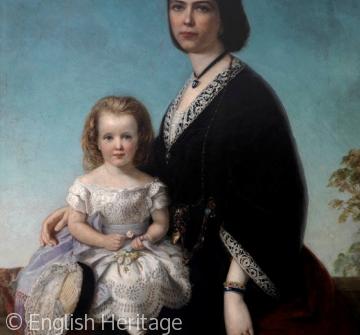The Women of Parham House

Women have featured strongly in the succession of owners at Parham although, until the Married Woman's Property Act of 1882, a woman's property passed automatically to her husband on marriage. Parham was most recently descended through the female line to Lady Emma Barnard, who lives there with her family now.
Women, and particularly heiresses, played an important part in the fortunes of landed estates such as Parham. Marriages between estate owners and women from wealthy families brought new sources of finance to many estates. Sometimes such alliances contributed not only money but also land to the heiress's new family. When William Palmer, son of the first owner, married Elizabeth Verney of Fairfield, Somerset, he acquired her family estate, which soon after became the Palmers' main home. In the 17th century the marriage of two Oxfordshire heiresses to Bisshopp owners provided new funds to draw on. Sometimes owners overestimated the wealth of their brides. Emily Wilmot-Horton unfortunately did not bring as much money to Parham as her husband, Robert Curzon junior, had expected when he married her in 1850.
It is difficult to document female influence on the way that Parham developed and was used, as it is with most country houses . Most evidence survives in the form of diaries, letters and oral testimony. The diaries of Lady Catherine Pechell provide vivid pictures of life at Parham in the early 19th centuryand recollections about changes made to the house by her forebears. The memories of Barabara Frankland and her brother recall what the house was like early in the 20th century when it was owned by their grandmother, Mary Frankland Curzon.
We can use written evidence and old paintings, photographs and architectural plans to assess how Parham changed as women's role in society evolved. For example, old photographs of a sitting room show its feminine character - a trait that can be seen in depictions of rooms in many other houses. The transfer of the kitchen from the basement to a more convenient position nearer the dining room on the ground floor indicates that there was more direct involvement by the mistress of the house in the preparation of meals after the Second World War, when fewer servants were employed.
Content generated during research for the paperback book 'Parham: An Elizabethan House and its Restoration' (ISBN 978-1-86077-485-0) for the England's Past for Everyone series



